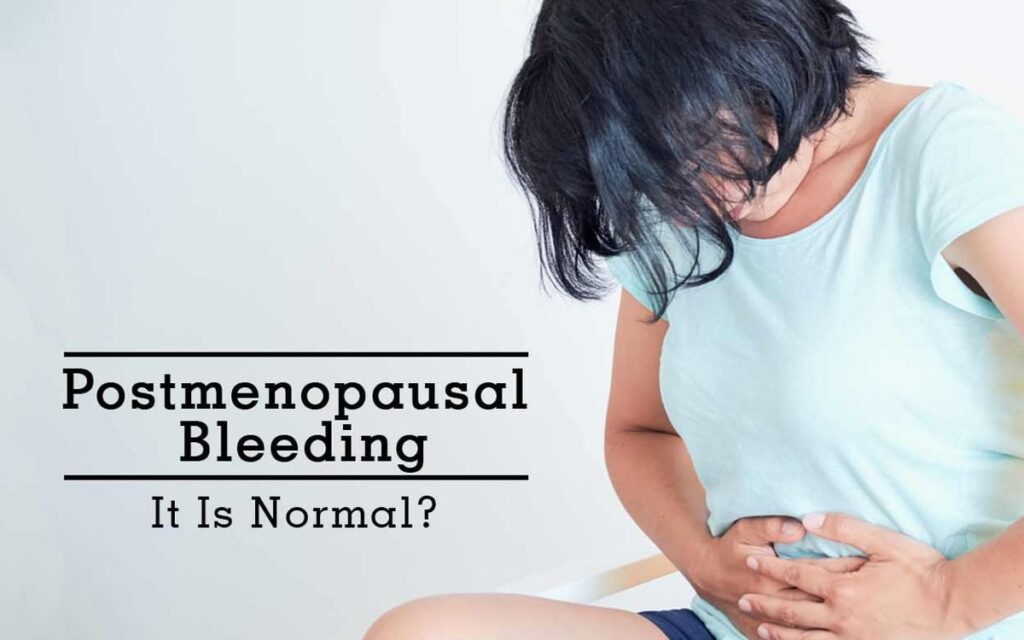Postmenopausal Bleeding: Causes, Symptoms, Diagnosis, and Treatment
Postmenopausal bleeding is vaginal bleeding that occurs after a woman has reached menopause. Menopause means you haven’t had a period in at least one year, typically occurring between the ages of 45 and 55 as per WHO. It can be a symptom of vaginal dryness, polyps (noncancerous growths) or other changes in your reproductive system. Postmenopausal bleeding is a concerning symptom and should always be evaluated by a healthcare professional as it may be a sign of underlying health issues, including serious conditions like cancer.
Causes of Postmenopausal Bleeding
Several factors can cause postmenopausal bleeding, including:
- Endometrial Atrophy: The endometrium is the tissue that lines the uterus. It commonly causes postmenopausal bleeding due to the thinning of the endometrial lining. The endometrium responds to hormones such as estrogen and progesterone. As estrogen levels decrease, the endometrial lining can become fragile and prone to bleeding.
- Hormone Replacement Therapy (HRT): Women undergoing HRT may experience bleeding as a side effect, especially if they are taking combined estrogen and progesterone therapy.
- Endometrial Hyperplasia: After menopause, you may have too much estrogen and too little progesterone. As a result, the endometrium gets thicker and can bleed. It may sometimes lead to endometrial cancer if left untreated.
- Polyps: These tissue growths appear inside your uterus, cervical canal or on your cervix. They are usually noncancerous (benign), but they can cause spotting, heavy bleeding, or bleeding after sex.
- Cancer: Postmenopausal bleeding can be a sign of uterine (endometrial) cancer, cervical cancer or ovarian cancer. Any bleeding should be investigated to check for cancer
- Other Causes: Less commonly, bleeding can be due to infections, trauma, or certain medications.
Symptoms of Postmenopausal Bleeding
The primary symptom of PMB is vaginal bleeding after menopause. The bleeding can vary in presentation, including:
- Light spotting or staining
- Heavy bleeding similar to a menstrual period
- leeding that occurs intermittently
- Other accompanying symptoms may include pelvic pain, unusual vaginal discharge, or symptoms related to the underlying cause, such as weight loss or fatigue in cases of malignancy.
Diagnosis of Postmenopausal Bleeding
To find the cause of postmenopausal bleeding involves several steps:
- Medical History and Physical Examination: The doctor will take a thorough medical history and perform a pelvic examination to assess the source of the bleeding.
- Transvaginal Ultrasound: This imaging test uses sound waves to create pictures of the uterus and can help evaluate the thickness of the endometrial lining. A thickened endometrium may indicate hyperplasia or cancer.
- Endometrial Biopsy: A small sample of the endometrial tissue is taken and examined under a microscope to check for abnormal cells or cancer.
- Hysteroscopy: A procedure in which a small camera is inserted into the uterus through the cervix to directly visualize the uterine cavity and identify any abnormalities.
- Pap Smear: This test screens for cervical cancer by collecting cells from the cervix for examination.
- Blood Tests: These may be done to evaluate hormone levels and rule out other potential causes of bleeding.
- Treatment of Postmenopausal Bleeding
- The treatment for postmenopausal bleeding depends on the underlying cause:
- Endometrial Atrophy: Hormone therapy or vaginal estrogen creams may be prescribed to help restore the thinning endometrial lining and stop bleeding. Your doctor may prescribe it in one of the following forms:
- Pills: You’ll take them by mouth.
- Vaginal cream: You’ll use an applicator to get it inside your body.
- Vaginal ring: You or your doctor can put it in place. It releases a steady dose of estrogen for about 3 months.
- Vaginal tablet: You’ll insert it using an applicator. You may need to do it daily, or a few times a week.
- Hormone Replacement Therapy: Adjustments to the type or dosage of HRT can help manage bleeding related to hormone therapy.
- Endometrial Hyperplasia: Progesterone therapy is used to treat endometrial hyperplasia by balancing estrogen levels, which helps reduce abnormal growth. Your doctor may prescribe progesterone in pill form, as a shot, through vaginal cream, or using an intrauterine device..
- Hysteroscopy: Polyps can be removed surgically through a procedure called hysteroscopy. They’ll insert a hysteroscopy into your vagina and pass tiny surgical tools through the tube. Doctors also use it to remove thickened parts of the uterine lining caused by endometrial hyperplasia
- Cancer: If cancer is diagnosed, treatment may involve surgery, radiation therapy, chemotherapy, or a combination of these approaches, depending on the type and stage of cancer.
- Infections or Other Causes: Appropriate antibiotics or other specific treatments will be given based on the diagnosis.
Postmenopausal bleeding is a symptom that should never be ignored. It can also be an early sign of serious diseases such as cancer. Prompt evaluation and diagnosis by a healthcare provider are essential to determine the cause and appropriate treatment. Regular check-ups and awareness of symptoms can help in early detection and improve outcomes for women experiencing postmenopausal bleeding.

